Gallery
-
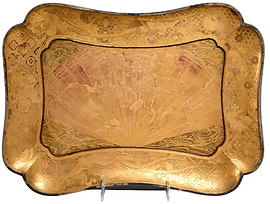
NW-82
sold
Fine Japanese Meiji Period gilt lacquerware tray
Fine Japanese Meiji period gilt lacquerware tray. The center depicting a fan decorated with cranes under a cherry tree, nashiji lacquered bottom. Japan: circa 1890 Provenance: Collection of Karl Stirner, Easton PA
- width
- 15 in.
- height
- 1 in.
- depth
- 11 in.
- condition
- Some rubbing to lacquer around rim, light surface scratches throughout
-
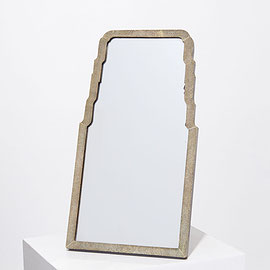
M-59
English Shagreen Frame Table Mirror in the Manner of Asprey & Co
English Shagreen frame table mirror in the manner of Asprey & Co England: circa 1910
- width
- 13 in.
- height
- 25 in.
- depth
- 1 in.
-
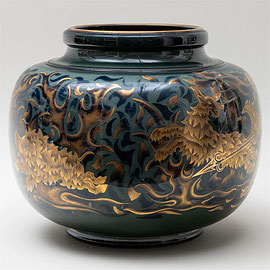
CR-07
on hold
Pierre-Auguste Gaucher for Sevres Art Deco Porcelain Hunting Scene Vase
Pierre-Auguste Gaucher for Sevres Art Deco porcelain vase, hunting scene with green and gold enamel printed mark, gilt signature, numbered '115-47'. stamped Manufacture Nationale de Sèvres mark France: 1947
- height
- 13 in.
- diameter
- 15 in.
- condition
- Minor wear, hairline aging hairline crack to glazing at base. Otherwise in good condition.
-
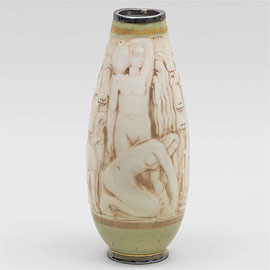
CR-35
on hold
Sevres Art Deco Porcelain Vase by Adrien Leduc
Art Deco period sèvres porcelain vase with silvered metal base and rim by Andrien Leduc Printed mark and signature "A Leduc" France: 1933 Provenance: Property from the collection of James Grafstein
- height
- 14
- diameter
- 5.5
- condition
- Very good overall condition .
-
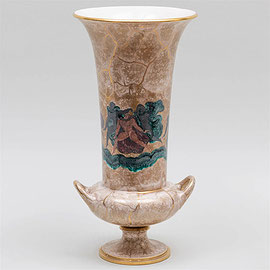
CR-39
Large Art Deco Sevres Porcelain Vase by Jean Mayodon
Large Art Deco Sevres Porcelain Vase by Jean Mayodon with male and females figures. Gilt painted mark, 1952. France: 1952 Provenance: Property from the Collection of James Grafstein
- height
- 18.25 in.
- diameter
- 9 in.
- condition
- Minor wear consistent with age and use, slight rubbing to gilt rim, otherwise in good condition.
-
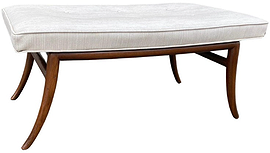
S-22
Walnut Modernist Bench by Robsjohn Gibbings for Widdicomb
Walnut modernist bench by Robsjohn Gibbings for Widdicomb with sabre feet. Bearing sticker Widdicomb. U.S.A.: circa 1950
- width
- 34.5 in.
- height
- 15.25 in.
- depth
- 18 in.
-
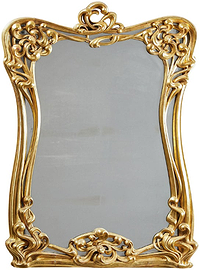
M-58
French Art Nouveau Giltwood Mirror
Rare French Art Nouveau carved and gilt wood mirror , "Ecole de Nancy" . This mirror is from the Art Nouveau period, handmade in France in the early beginning of the 20th century. The Art Nouveau artistic movement is known for emphasizing on naturalistic forms and decorations, it was created in Nancy in the region of Lorraine where of the " School of Nancy" was founded by famed creators like Emile Gallé, Louis Majorelle, Daum and others. The mirror is unsigned and we are unsure as to who made it but it was purchased from a collection along with a gilt wood settee known to be by Louis Majorelle. Bearing tag of Christie's, New York, March 26, 1988, Lot 157
- width
- 32.5
- height
- 43
- depth
- 2 in.
-
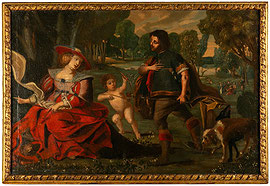
P-51
Late 17th Century Painting Follower of Johann Hulsman "Gallant Scene"
oil on canvas German 17th school follower of Johann Hulsman "Gallant Scene" written "Bonhams" in chalk on the stretcher
- width
- 44 in.
- height
- 29.75 in.
- depth
- 1 in.
-
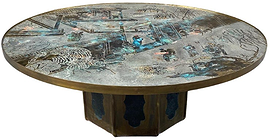
T-06
sold
"Chan" Coffee Table by Philip and Kelvin Laverne
Engraved and acid-etched, patinated and polychromed bronze, pewter and enamel "Chan" circular dining table by Philip and Kelvin LaVerne. Signed "Phillip and Kelvin Laverne."
- height
- 17.5 in.
- diameter
- 47.5 in.
-
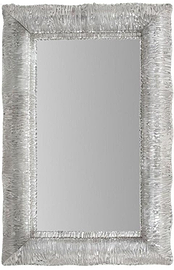
M-57
$36,000
Rare Clear Moulded Glass Mirror by Paolo Venini
Rare clear moulded glass mirror by Paolo Venini Italy: circa 1950. Provenance: From a Thad Hayes-designed 15 central park west private residence. Literature: Deboni, Venini Glass, Its History, Artists and Techniques, p. 29.
- width
- 25.5 in.
- height
- 39 in.
- depth
- 3
- condition
- Very good original condition.
-

SC-64
Patinated Bronze the "Hugger" After Bruno Zach
Patinated bronze the "Hugger" after Bruno Zach. 20th Century
- height
- 7 in.
-
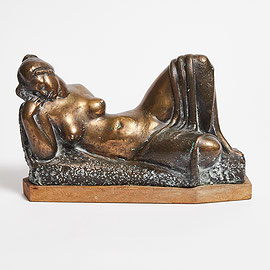
SC-24
on hold
Bronze Reclining Nude by Vincent Glinsky
gilded and patinated bronze reclining nude by Vincent Glinsky. United States: circa 1970
- width
- 12 in.
- height
- 7
- depth
- 5.5
-
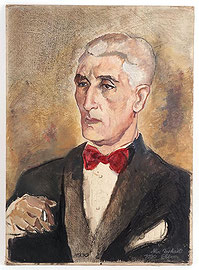
P-04
on hold
Mix Media on Board Portrait of a Gentleman By Lucretia Mihail Silion
Média Mixte on board portrait of a gentlman by Lucretia Mihail Silion Signed and dated at the base: "Luc Mihail Silion 1930"
- width
- 19.5 in.
- height
- 27.5 in.
-
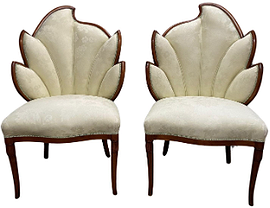
S-110
Pair of Mahogany Hollywood Regency Flame Back Chairs
Pair of Mahogany Hollywood Regency flame back chairs USA: circa 1950 height to seat: 17.5 in.
- width
- 26 in.
- height
- 41.5 in
- depth
- 29 in.
-
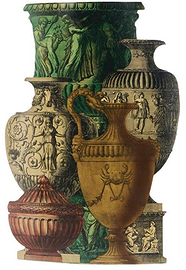
F-36
Trompe Oeil "Vasi Antichi" Metal Umbrella Stand by Piero Fornasetti
Trompe Oeil "Vasi Antichi" Metal Umbrella Stand by Piero Fornasetti Italy, c. 1955 / c. 1960 lithographic transfer print over steel with hand-coloring, enameled steel Paper manufacturer's label to reverse ‘Fornasetti MIlano Made in Italy’. literature: Fornasetti: The Complete Universe, Fornasetti et. al, pg. 463
- width
- 18.25 in.
- height
- 28.75 in.
- depth
- 6.75 in.
-
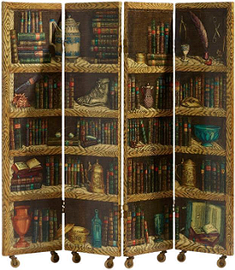
F-35
TROMPE L’OEIL “LIBRI” FOUR-PANEL FOLDING SCREEN BY PIERO FORNASETTI.
Lithographic transfer-printed and lacquered wood trompe L"oeil “Libri” four-panel folding screen by Piero Fornasetti the reverse with musical instruments Fornasetti Milano Italy, 1954 / c. 1958 literature: Fornasetti: The Complete Universe, Fornasetti et al., ppg. 424, 439
- width
- 55 in.
- height
- 53.75 in.
- depth
- 2 in.
-
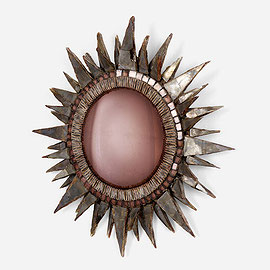
M-52
sold
"Miroir Soleil" , mirror by Atelier Line Vautrin, A.D.A.M.
"Miroir Soleil", pink glass, talosel, resin and copper mirror by Atelier Line Vautrin, A.D.A.M. (Association pour le Développement des Arts Manuels). France, c. 1970 From 1967 to 1972 , Line Vautrin founded and directed an art school to pass on her know-how and artisanal technics. The school was located at 29 quai des Grands Augustins in Paris and was called L'ADAM ( association-developement-arts manuels). The artist called on her best worker for many years, Thérèse Patchayan, as well as her daughter Marie-Laure, who will teach her mother's know-how in France and around the world. Line Vautrin teaches the cutting of talosel plates, pattern cutting, modeling, gluing, coating, and hot inlays of all kinds. The objects were of all shapes, the mirrors, oxidized, sometimes crackled. Line Vautrin has always claimed to be an artisan, and teaches both peers established in the profession, keen to improve their techniques, and young aspiring artists wishing to learn from this important creator. Never interrupting her research on shapes and materials, she patented a process: “pellimorphoses”. This technique was later defined as “expansions of coloured plastics caught between two transparent surfaces”. This synthetic material was encrusted with small pieces of coloured mirrors. Provenance: Pierre Bergé & Associés, Paris, Collection PM: L’univers d’un collectionneur, 14 September 2018, Lot 234 | Private Collection
- depth
- 2 in.
- diameter
- 13.5 in.
- condition
- Very good condition
-
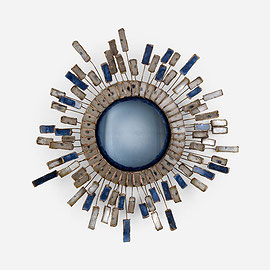
M-46
Atelier Line Vautrin , A.D.A.M. "Miroir Etincelles"
"Miroir Etincelles" mirror by Atelier Line Vautrin , A.D.A.M. (Association pour le Développement des Arts Manuels), blue and silvered mirrored glass set in talosel resin . France, c. 1970 From 1967 to 1972 , Line Vautrin founded and directed an art school to pass on her know-how and artisanal technics. The school was located at 29 quai des Grands Augustins in Paris and was called L'ADAM ( association-developement-arts manuels). The artist called on her best worker for many years, Thérèse Patchayan, as well as her daughter Marie-Laure, who will teach her mother's know-how in France and around the world. Line Vautrin teaches the cutting of talosel plates, pattern cutting, modeling, gluing, coating, and hot inlays of all kinds. The objects were of all shapes, the mirrors, oxidized, sometimes crackled. Line Vautrin has always claimed to be an artisan, and teaches both peers established in the profession, keen to improve their techniques, and young aspiring artists wishing to learn from this important creator. Never interrupting her research on shapes and materials, she patented a process: “pellimorphoses”. This technique was later defined as “expansions of coloured plastics caught between two transparent surfaces”. This synthetic material was encrusted with small pieces of coloured mirrors. Provenance: Pierre Bergé & Associés, Paris, Collection PM: L’univers d’un collectionneur, 14 September 2018, Lot 235 | Private Collection
- depth
- 2 in.
- diameter
- 15 in.
- condition
- Very good condition
-
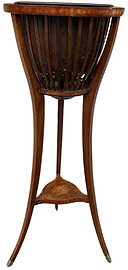
OA-16
Edwardian Period Manohgany Planter on Stand
Edwardian period mahohgany planter on stand fitted with copper liner England: circa 1910
- height
- 36
- diameter
- 14.25
-
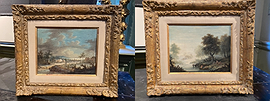
P-49
Pair German of Oil on Panel 18th Century Pastoral Paintings
Pair German 18th century pastoral paintings Bearing sticker dominion gallery in Montreal Framed by the house of Heydendryk NYC
- width
- 8.5 in.
- height
- 6.75 in.
-
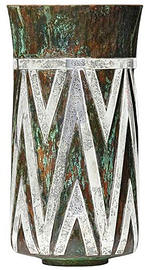
NW-17
$2,450
Patinated Cooper and Silver Vase by Graziella Laffi
Patinated Cooper and Silver Vase by Graziella Laffi Impressed signature and silver hallmark to neck ‘Peru G. Laffi 925’.
- height
- 8 in.
- diameter
- 4 in.
- condition
- very good condition.
-
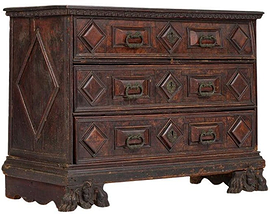
C-22
Stained Pine 17th Century Italian Walnut Commode
Cabinet features a fall-front writing surface opening to a fitted interior concealing twelve drawers.The rectangular moulded top above a frieze carved with Vitruvian scrolls on figural carved feet.
- width
- 56 in.
- height
- 42 in.
- depth
- 25 in.
-
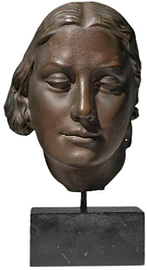
SC-61
Elegant Bronze Sculpture Mask of a Woman
Elegant Bronze Sculpture Mask of a Woman. USA: circa 1935
- width
- 10.5 in.
- height
- 18.5 in.
- depth
- 9 in.
-
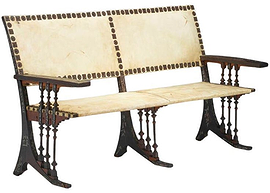
S-105
Rare and Important Walnut and Parchment Bench by Carlo Bugatti
Rare carved walnut bench by Carlo Bugatti upholstered with parchment, inlaid with pewter details and mounted with hammered copper decorations.Italy, c. 1906 literature: Carlo Bugatti au Musée d'Orsay, Massé, pg. 97 illustrates similar example
- width
- 65
- height
- 37
- depth
- 28